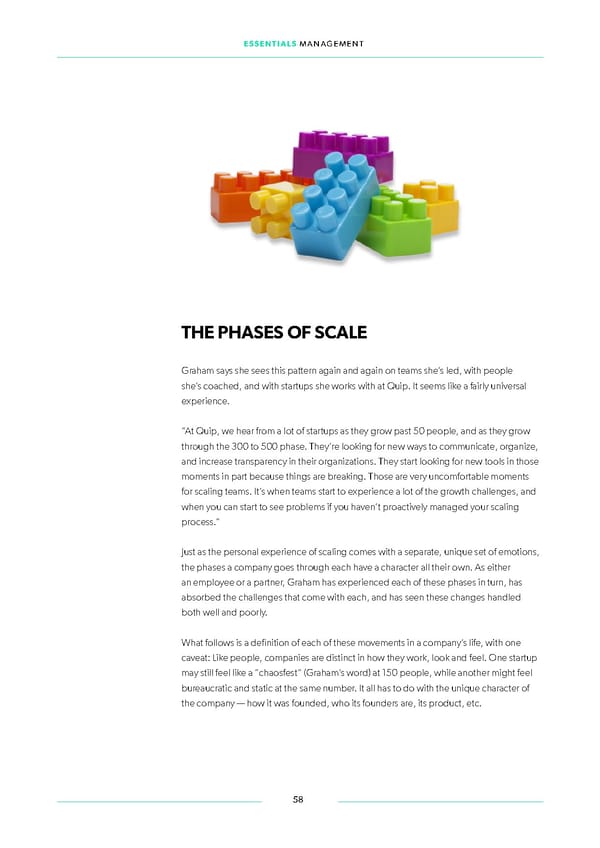ESSENTIALS MANAGEMENT THE PHASES OF SCALE Graham says she sees this pattern again and again on teams she’s led, with people she’s coached, and with startups she works with at Quip. It seems like a fairly universal experience. “At Quip, we hear from a lot of startups as they grow past 50 people, and as they grow through the 300 to 500 phase. They’re looking for new ways to communicate, organize, and increase transparency in their organizations. They start looking for new tools in those moments in part because things are breaking. Those are very uncomfortable moments for scaling teams. It’s when teams start to experience a lot of the growth challenges, and when you can start to see problems if you haven’t proactively managed your scaling process.” Just as the personal experience of scaling comes with a separate, unique set of emotions, the phases a company goes through each have a character all their own. As either an employee or a partner, Graham has experienced each of these phases in turn, has absorbed the challenges that come with each, and has seen these changes handled both well and poorly. What follows is a deifnition of each of these movements in a company’s life, with one caveat: Like people, companies are distinct in how they work, look and feel. One startup may still feel like a “chaosfest” (Graham’s word) at 150 people, while another might feel bureaucratic and static at the same number. It all has to do with the unique character of the company — how it was founded, who its founders are, its product, etc. 58
 Essentials Management First Round Capital Page 57 Page 59
Essentials Management First Round Capital Page 57 Page 59